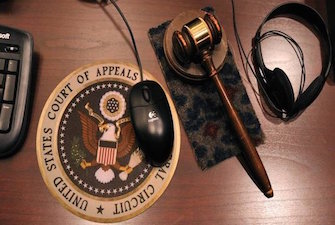 Nestlé USA, Inc. v. Steuben Foods, Inc., No. 2017-1193, 2018 U.S. App. LEXIS 6241 (Fed. Cir. Mar. 13, 2018) (Before Dyk, Reyna, and Hughes, J.) (Opinion for the court, Hughes, J.)
Nestlé USA, Inc. v. Steuben Foods, Inc., No. 2017-1193, 2018 U.S. App. LEXIS 6241 (Fed. Cir. Mar. 13, 2018) (Before Dyk, Reyna, and Hughes, J.) (Opinion for the court, Hughes, J.)
During an inter partes review of the ‘468 patent, owned by Steuben and directed to systems of aseptic packaging of food products, the Board found claim 9 was not obvious. Nestle appealed, arguing that the Board erred by applying an erroneous construction of the terms “aseptic” and “aseptically disinfecting.” Because Nestle previously appealed the Board’s construction of “aseptic” in a separate inter partes review of the ’013 patent, also owned by Steuben, and related to the ‘468 patent, collateral estopped attached to this case.
Collateral estoppel is not limited to identical patent claims. Instead, the identity of the litigated issues determines whether collateral estoppel applies. Here, the term “aseptic” was at issue in both cases. Furthermore, the two patents provided identical lexicography for the term “aseptic” in their specifications. There were no material differences between the two patents or their prosecution histories that would give rise to different claim construction issues. Both patents claimed priority to the same provisional application and shared substantially similar descriptions of the claimed inventions. The issue of claim construction was fully and fairly litigated during the prior appeal and collateral estoppel applied.
The Federal Circuit thus vacated the Board’s claim construction as erroneous, construed aseptic to mean the “FDA level of aseptic,” as previously decided, vacated the Board’s non-obviousness determination, and remanded for further proceedings.
Take Away
Collateral estoppel is not limited to identical patent claims or claims within a single patent and may preclude a contradictory construction of a claim term already construed in an inter pates review of a related patent, particularly when both patents provide “identical lexicography” for the disputed term.
[Troutman-Ad]
[Troutman-About]

![[IPWatchdog Logo]](https://ipwatchdog.com/wp-content/themes/IPWatchdog%20-%202023/assets/images/temp/logo-small@2x.png)


![[Advertisement]](https://ipwatchdog.com/wp-content/uploads/2024/04/Patent-Litigation-Masters-2024-sidebar-early-bird-ends-Apr-21-last-chance-700x500-1.jpg)

![[Advertisement]](https://ipwatchdog.com/wp-content/uploads/2021/12/WEBINAR-336-x-280-px.png)
![[Advertisement]](https://ipwatchdog.com/wp-content/uploads/2021/12/2021-Patent-Practice-on-Demand-recorded-Feb-2021-336-x-280.jpg)
![[Advertisement]](https://ipwatchdog.com/wp-content/uploads/2021/12/Ad-4-The-Invent-Patent-System™.png)







Join the Discussion
No comments yet.